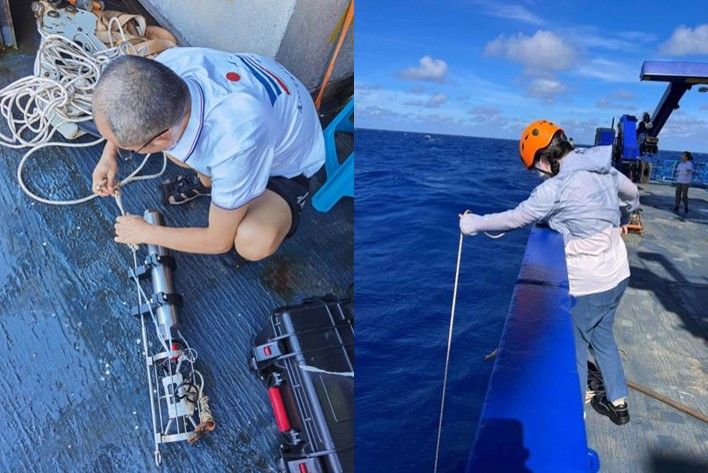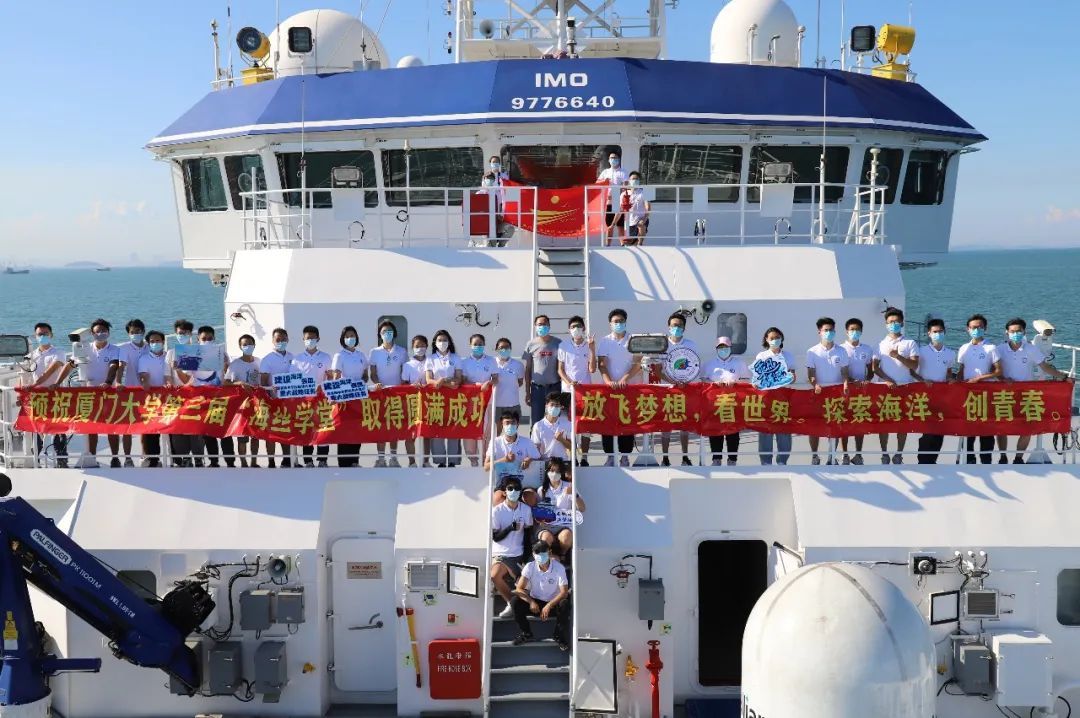In the early morning of August 5, 2022, with a prolonged blast, R/V TKK departed for the “XMU at Sea” Undergraduate Training Cruise which had paused over the COVID-19 outbreak for two years.
In total 64 undergraduates and teachers from Northwest University (NWU), XMU, and XMUM aboard the vessel conducted an around ten-day field campaign in the northern South China Sea (SCS). They were provided with the chance to participate in sea-going operations related to marine biogeochemistry, physical oceanography, applied marine physics and engineering, and more.

A group photo of all undergraduates and teachers of Leg I.
Twenty-three on-site operations were implemented at three stations during Leg I, including CTD casts, deep-sea sediment gravity corers, box corers, and benthic trawling. Undergraduates were fully immersed in various ocean-related research onboard. They were stunned to witness a nearly 10-meter-long “thin and long” sediment sample finally acquired with the gravity corer. It’s worth waiting for over three hours.
The gravity corer is one of the sediment samplers that can be used to plunge into the sea bottom and extract deep-sea sediments. The geological archives encoded in deep-sea sediments offer clues for studying the current and past marine environment, such as temperature, precipitation, and biological activities in the ocean. These data also have high research value for other fields.
To record the original information and provide an intuitive description for researchers who were not aboard, the collected sample was soon cut into halves, and half of it was made into sediment smears for preliminary on-site observations and records of its color, grain size, and structure.

The gravity corer was recovered.

The sediment sample was cut into halves.
During Leg I, the underwater acoustic communication performance trial was conducted by undergraduates and teachers in the field of marine physics to study the change of transmitted signal through underwater acoustic channels, and the restoration of the received signal by the demodulation algorithm.

Students sorted out and lowered the underwater acoustic instrument.
The second leg of the KK2203 cruise was implemented during August 14-18. In addition to field campaign and practice, storytelling salons, and other educational activities were held onboard.

A group photo of all undergraduates and teachers of Leg II.
To date, over 200 undergraduates have benefited from the “XMU at Sea” training program. R/V TKK will continue to serve the needs of academic and oceanographic research community in the future.


